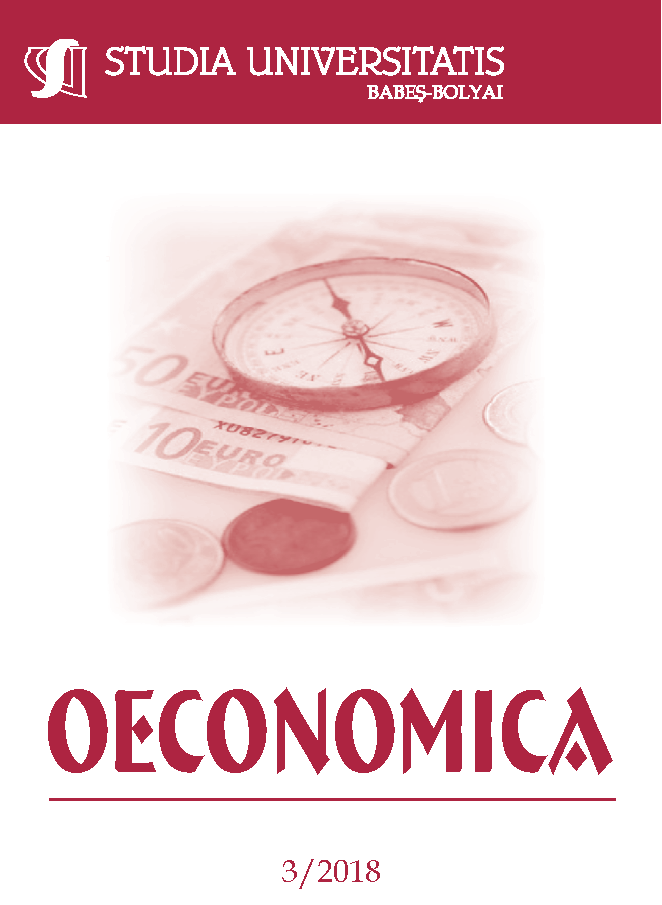TRADE COMPETITION MEASUREMENT AND THE CHOICE OF MEASUREMENT INDEXES
DOI:
https://doi.org/10.2478/subboec-2018-0011Keywords:
trade competition; structural similarity; export structures; trade competition indexes; competition measurement; Krugman indexAbstract
The aim of this paper is to bring a methodological and empirical contribution to the measurement of trade competition. Globalization and the emergence of new poles in the world economy brought changes to the global landscape and consequent increase in international trade. There is a debate in the literature with regard the indexes that are better fit to be applied in empirical examples for the acquirement of relevant results for measurement of trade competition. This measurement will be achieved by observing the levels of structural similarity in distinct areas and at different moments in time. A higher degree of similarity between the export structures implies a stronger competition in destination markets. The values obtained for this measurement are highly relevant for the trade competition topic. Through this study we further explore the measurement of trade competition and comparatively discuss several indexes used in this area of research.
JEL classification: B17, B27;
References
Berthelon M., Freund C. (2008) On the conservation of distance in international trade, Journal of International Economics, 75(2), 310-320
Crespo N., Fontoura M. (2007) Determinant Factors of FDI Spillovers - What Do We Really Know?, World Development, 35(3), 410-425
Crespo N., Simoes N. (2012) Competition in Tourism Arrivals – A Multidimensional Index of Geographical Structural Similarity, Tourism Analysis 13-5(1), 4-30
Head K., Mayer T. (2013) What separates us?, Sources of resistance to globalization, Canadian Journal of Economics, 46(4), 1196-1231
Höhenberger, N., Schmiedeberg C. (2008) Structural convergence of European countries, CeGE Discussion Paper, No. 75
Höhenberger, N.; Schmiedeberg, C. (2008): Structural convergence of European countries, CeGE Discussion Paper, No. 75
Jenkins R. (2008) Measuring the Competitive Threat from China for other Southern Exporters, The World Economy, 31(10), 1351-1366
Krugman P. (1991) Increasing Returns and Economic Geography, Journal of Political Economy, 99(3), 483-99
Lopes J., Lopes A., Sequeira T. (2014) Public Debt, Economic Growth, and Inflation in African Economies, MPRA Paper No. 57377
Midelfart-Knarvik et al., (2003) The Spatial Distribution of Economic Activities in the European Union, Handbook of Regional and Urban Economics: Cities and Geography, Elsevier 4:2845-2909
Moreira S., Simoes N., Crespo N. (2017) A contribution to a multidimensional analysis of trade competition, The World Economy, 40(10), 2301-2326
Palan N. (2010) Measurement of Specialization – The Choice of Indices, FIW Working Paper N° 62
Palan N., Schmiedeberg C. (2010) Structural convergence of European countries, Structural Change and Economic Dynamics, Elsevier, 21(2), 85-100
Riad N., Errico L., Henn C., Saborowski C., Saito M., Turunen J. (2012) Changing Patterns of Global Trade, Washington, D.C.: International Monetary Fund, c2011 978-1-61635-207-3
Wacziarg R., Horn Welch K. (2008) The world bank economic review, Advance Access Publication, vol. 22, no. 2, pp. 187–231 PWC (2017) The Long View, How will the global economic order change by 2050?, The World in 2050
World Trade Report (2013) Factors shaping the future of world trade, World Trade Organization, 13(4), 42-88
Downloads
Published
How to Cite
Issue
Section
License
Copyright (c) 2018 Studia Universitatis Babeș-Bolyai Oeconomica

This work is licensed under a Creative Commons Attribution-NonCommercial-NoDerivatives 4.0 International License.






